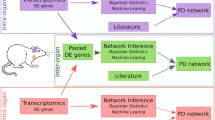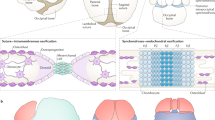Abstract
IT has been shown that treatment of chicken embryos with insulin will produce malformations of quite different kinds according to the developmental stage at which the hormone is administered. During the earliest period of incubation rumplessness is the typical insulin-induced defect, that is, a partial or complete suppression of the tail skeleton and its related soft tissues1–3. When, however, insulin is injected after 4 or 5 days of incubation the tail structures remain intact, but the embryos are likely (incidence and severity always depending on dosage) to have disproportionately short legs (micromelia) and abnormalities of the facial skeleton, most commonly expressed as a shortening of the upper beak4. During the second period of response embryos can be effectively protected against the teratogenic activity of insulin by supplying them with supplementary nicotinamide, whereas during early stages only a limited lowering of the teratogenic activity of insulin is achieved by nicotinamide supplementation5,6.
This is a preview of subscription content, access via your institution
Access options
Subscribe to this journal
Receive 51 print issues and online access
$199.00 per year
only $3.90 per issue
Buy this article
- Purchase on Springer Link
- Instant access to full article PDF
Prices may be subject to local taxes which are calculated during checkout
Similar content being viewed by others
References
Landauer, W., J. Exp. Zool., 98, 65 (1945).
Landauer, W., and Bliss, C. I., J. Exp. Zool., 102, 1 (1946).
Moseley, H. R., J. Exp. Zool., 105, 279 (1947).
Landauer, W., J. Exp. Zool., 105, 145 (1947).
Landauer, W., J. Exp. Zool., 109, 283 (1948).
Landauer, W., and Rhodes, M. B., J. Exp. Zool., 119, 221 (1952).
Randle, P. J., and Smith, G. H., Biochim. Biophys. Acta, 25, 442 (1957).
Randle, P. J., and Smith, G. H., Biochem. J., 70, 490, 501 (1958).
Morgan, H. E., Randle, P. J., and Regen, D. M., Biochem. J., 73, 573 (1959).
Nathan, H. A., and Friedman, W., Science, 135, 793 (1962).
Burton, R. M., and Salvador, R., Ann. N.Y. Acad. Sci., 96, 353 (1962).
Dawkins, M. J. R., Judah, J. D., and Rees, K. R., Biochem. J., 73, 16 (1959).
Kono, T., and Colowick, S. P., Arch. Biochem. Biophys., 93, 514 (1961).
LeBlanc, J. A., Proc. Soc. Exp. Biol. Med., 103, 621 (1960).
Author information
Authors and Affiliations
Rights and permissions
About this article
Cite this article
LANDAUER, W., CLARK, E. Interaction of Insulin and Chlorpromazine in Teratogenesis. Nature 198, 215–216 (1963). https://doi.org/10.1038/198215b0
Issue Date:
DOI: https://doi.org/10.1038/198215b0
Comments
By submitting a comment you agree to abide by our Terms and Community Guidelines. If you find something abusive or that does not comply with our terms or guidelines please flag it as inappropriate.



